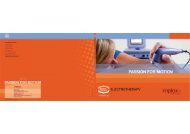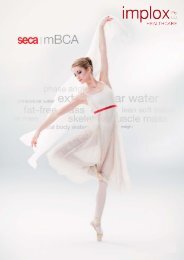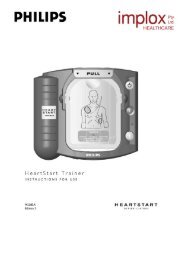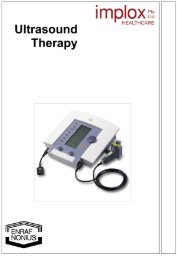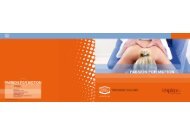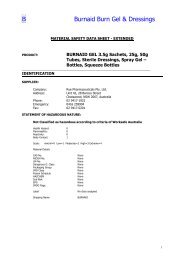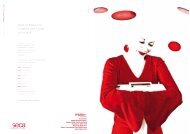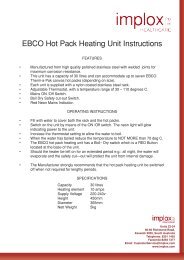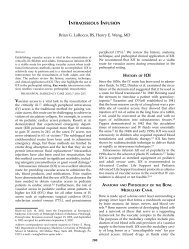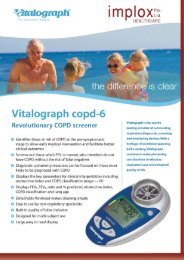Low and medium Frequency Electrotherapy - Implox
Low and medium Frequency Electrotherapy - Implox
Low and medium Frequency Electrotherapy - Implox
Create successful ePaper yourself
Turn your PDF publications into a flip-book with our unique Google optimized e-Paper software.
3 FROM THEORY TO PRACTICE<br />
3.1 Introduction<br />
Enraf-Nonius electrotherapy equipment offers a range of current types capable of selectively stimulating the nervous<br />
system with the aim of reducing pain, restoring the autonomic balance or stimulating the musculature. This chapter<br />
describes the diadynamic current types, the 2-5 current <strong>and</strong> alternating currents (interferential <strong>and</strong> TENS currents).<br />
These various forms of low-<strong>and</strong> <strong>medium</strong>-frequency electrotherapy are dealt with in one chapter because, insofar as<br />
the aim is pain reduction or restoration of the autonomic balance, there are many similarities in the range of<br />
indications, the method of application <strong>and</strong> the electrophysiological effects.<br />
3.2 Diadynamic current types<br />
3.2.1 Description of current types<br />
Bernard uses the term ‘diadynamic current’ to refer to a monophase (MF – Monophasé Fixe) or double-phase (DF –<br />
Diphasé Fixe) rectified alternating current, with a frequency which is derived directly from the mains supply, resulting<br />
in sinusoidal pulses with a duration of 10 ms. This phase time of 10 ms will mainly depolarize thick fibres. Stimulation<br />
of thin fibres as well can only be obtained at higher current amplitudes (Fig. 5).<br />
The diadynamic current types have won a significant position in the history of (European) physiotherapy. They are<br />
somewhat unfairly dismissed as outdated when compared with interferential currents or TENS. In fact, however, the<br />
diadynamic currents have quite specific effects when used for pain reduction or improvement of tissue metabolism.<br />
Enraf-Nonius (low-frequency) electrotherapy equipment is based on the four classic diadynamic current types:<br />
• MF (Monophasé Fixe), frequency 50 Hz<br />
• DF (Diphasé Fixe), frequency 100 Hz<br />
• CP (Courtes Périodes), rapid alternation between one second of MF current <strong>and</strong> one second of DF current<br />
• LP (Longues Périodes), slow alternation between six seconds of MF current <strong>and</strong> a six-second DF phase. In the<br />
DF phase the intervals between the MF pulses are filled with additional pulses which gradually increase in<br />
amplitude to that of the MF pulses, resulting in a DF current, after which the amplitude of the additional pulses<br />
decreases again to zero <strong>and</strong> the MF current continues for a further six seconds. The whole duration of the DF<br />
phase, including increase <strong>and</strong> decrease (ramp up <strong>and</strong> ramp down), is six seconds.<br />
DF double-phase rectified alternating current.<br />
MF monophase rectified alternating current.<br />
LP Slow alternation between DF <strong>and</strong> MF.<br />
CP rapid alternation between DF <strong>and</strong> MF.<br />
Fig 7.<br />
Current types.<br />
12



